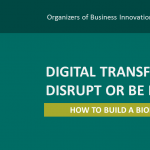Many business people live in a contradiction when it comes to understanding an important aspect of business and technical innovation in Japan and Korea. On one hand, they marvel at the business success stories found in corporations like Honda or Sony. On the other hand, they denigrate or even dismiss those same successes by calling them names. These achievements are often put down as “copycats”—products and services very similar to those originally created by innovation departments in western corporations.
Clearly, these Asian companies are delivering high impact innovations to the world that others cannot replicate. More importantly, they are wowing customers and capturing significant value. Instead of dismissing these achievements as “copycats,” we propose to adopt another way to describe this success—a way that helps us to learn from success instead of ignoring it.
The first step in this learning process is to change our vocabulary so we can frame these successes appreciatively. Our research on innovation breakthroughs reveals that companies like Honda and Sony have adopted an innovation strategy that targets an intermediary solution between today’s business and technical realities and a perfect future business and technical solution. This strategy, which may appear incremental, is often sufficient to create a breakthrough solution that can “wow” customers and create barriers to entry. We call this strategy blended innovation.
In contrast, many western companies still look to innovation mainly to supply radical innovations to differentiate and to drive organic growth. But this approach does not suit today’s realities. These breakthrough innovations require significant new knowledge, experimentation, resources and time—all of which are now scarce. The outcomes of radical innovations are often not clear and the timelines hard to predict. Patience from senior executives for uncertainty is lacking, as well as protection of these initiatives between leadership successions. Finally, while we are waiting on breakthrough innovations in the west, blended innovations from eastern companies are taking market share and building brand equity.
Let us look at two salient examples of how blended innovation can work: Hybrid electric/gas cars, and lithium ion liquid/solid batteries. In the former case, the ideal solution is a car powered solely by electricity. In the case of lithium ion liquid/solid batteries, the ideal solution is a solid-state battery for cell phones that does not leak.
Hybrid electric/gas cars. GE, Ford and BMW have been working for years to replace the combustion engine with a 100% electric engine powered either by batteries or fuel cells. The mindset in these companies was to continue optimizing the combustion engine while developing the very challenging electric vehicle.
In the meantime, both Honda and Toyota decided to pursue development through an intermediate step. They realized: 1) gas-powered cars already had infrastructure for refueling and 2) batteries were far from being able to deliver the power and energy expected from a car by the market. But they did realize that a partial battery solution was useful because it provided significant increase in kilometers per liter compared to gas combustion engines. It is this blend of current technology and innovations in the Toyota Prius that has “wowed” the world while 100% commercial electric cars are still just dreams on a drawing board.
Battery solution for cell phones. In order to replace liquid electrolyte lithium ion batteries, Motorola, 3M and Bell Labs worked in the early 90s to make a solid polymer electrolyte battery. The goal of this work was to make a shapeable and flexible solid state rechargeable battery for cell phones and the general battery market. In contrast, Sony and Toshiba decided to take an intermediate step. Their solution was a gel—a gel being a kind of a liquid which nonetheless possessed all the desired characteristics of a solid. The liquid characteristic allowed the batteries to have higher power compared to a true solid-state electrolyte battery while the almost solid construction prevented the batteries from leaking. As a result, while the Americans worked on a true solid-state solution, the Japanese were able to launch their intermediate products to market. Profits from these programs soon allowed them to launch solid-state electrolyte batteries ahead of the American competition.
In creating innovative products and services, dreaming big is good. What may be better is to keep funding those dreams with a halfway solution between today’s realities and an ideal future solution. This solution is blended innovation, a way to find sustained competitive advantage through incremental steps. This approach to innovation may be well suited for fast-followers but also for corporations that do have a rich tradition of doing difficult and long-term innovation development.
